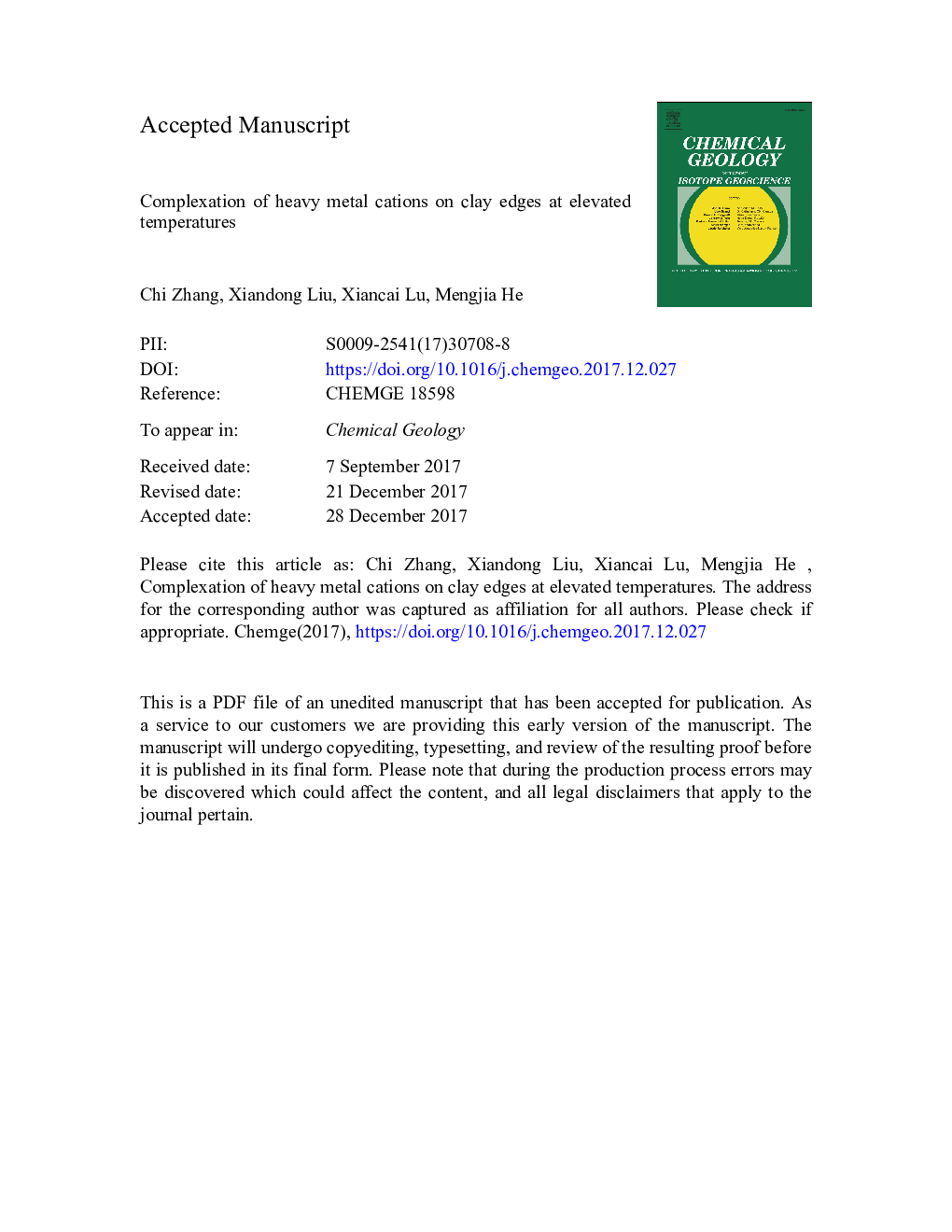| Article ID | Journal | Published Year | Pages | File Type |
|---|---|---|---|---|
| 8910372 | Chemical Geology | 2018 | 42 Pages |
Abstract
Aiming at the complexation mechanism of heavy metals on clay edges at elevated temperatures, we carried out systematic first principles molecular dynamics (FPMD) simulations at 423Â K by taking Cd(II) and Ni(II) as model cations. The results show that stable surface complexes include monodentate complexes on â¡Â SiO site, bidentate complexes on â¡Â Al(OH)2 site, and tetradentate complexes on octahedral vacancy on (010) edges and monodentate complexes on â¡Â SiO site, bidentate complexes on â¡Â AlOHÂ â¡Â AlSiO site, and tetradentate complexes on vacancy on (110) edges. Constrained FPMD simulations were conducted to calculate the desorption free energies of the complexes of the two cations on (010) surface. The results show that the octahedral vacancy has significantly higher free energy than the other sites regardless of the coordination of Al(III), indicating that the vacancy is the most favorable complexing site at elevated temperatures. The same conclusion has been deduced for (110) edges. Computed pKa values show that only the complexes on vacancy sites can hydrolyze in the common pH range, whereas those on the other sites hardly dissociate due to the extremely high pKa values, that is, the former complexes can serve as complexing sites for more metal cations. Additional simulations show that multinuclear complexes of Cd(II) and Ni(II) hold stably at 423Â K, which may act as precursors for epitaxial growth of new mineral phases. This study forms a physical basis for understanding the behaviors of heavy metals in various environments of elevated temperatures, and provides fundamental data for further experimental and modelling studies.
Related Topics
Physical Sciences and Engineering
Earth and Planetary Sciences
Geochemistry and Petrology
Authors
Chi Zhang, Xiandong Liu, Xiancai Lu, Mengjia He,
